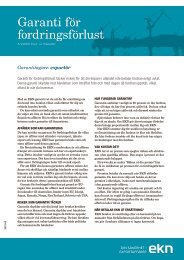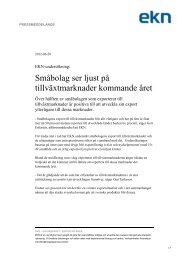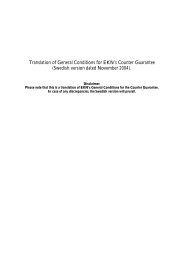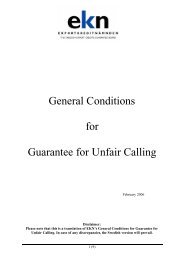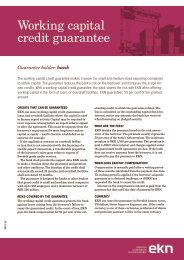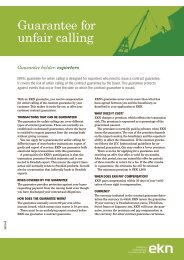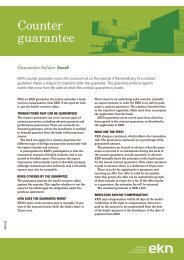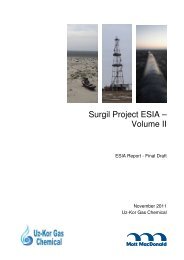Surgil ESIA Report - Volume III - EKN
Surgil ESIA Report - Volume III - EKN
Surgil ESIA Report - Volume III - EKN
You also want an ePaper? Increase the reach of your titles
YUMPU automatically turns print PDFs into web optimized ePapers that Google loves.
“Management of Ustyurt GCC infrastructure objects<br />
and <strong>Surgil</strong> GCF construction” UE »<br />
1. INTRODUCTION<br />
1.1. Oil and gas wells drilling is connected with formation of considerable volumes of wastes to<br />
which concern drilling mud, drilling cuttings or drilling rock, drilling mud-polluted drilling sewage<br />
wastes, chemical reagents, oil products. Chemical reagents in the drilling mud, containing in the<br />
structure a broad spectrum of the mineral and organic nature substances, can impact on the biosphere<br />
objects during their ingress in environment.<br />
1.2. Drilling mud carry out various functions: washout, drilling rock lifting, heat removal from chisel,<br />
maintenance of wells walls integrity, lessening of drill pipes friction on well walls, etc. One of<br />
the basic components of any drilling mud is always bentonite (Montmorillonite clay). Effect of this<br />
component is explained by features of its physical and chemical nature, interaction with the disperse<br />
medium with formation of stable colloid system in it.<br />
1.3. Surface-active substance (SAS) concern to the reagents decreasing surface tension on threephase<br />
border "layer-water-oil". Main purpose of SAS is maintenance of the collectors’ natural permeability.<br />
Their penetration into drilling mud sharply reduces wells productivity and considerably<br />
extends their adaptation terms. There are used various substances as SAS: sulfanole, disolvane, carbozoline,<br />
stearox, azolyte and various oxy-ethylated spirits. Imperfection of SAS is their intensive<br />
adsorption at solid phase of drilling mud and also intensive foaming.<br />
1.4. There are uses reagents-defoaming for degassing of the drilling mud: soastoc, carbolineum, fusel<br />
oil, polymethylsilosales, solid oil, synthetic fatty acids, etc. There are uses reagents- fluid loss<br />
reducer for drilling mud quality maintenance (coal-alkali reagent, carboxymethyl cellulose, condensed<br />
the sulfite-spirit slop, hydrolyzed polyacrylimide) and thinning agents (ferrochrome lignosulfonate,<br />
nitrolignin, sunil, igetane).<br />
1.5. Besides, there are applied: thermal stabilizers, amendments, lubricant additives, emulsifying<br />
agents and other components. There is applied caustic soda all over the world as practically unique<br />
reagent – alkalinity controller. Caustic soda (NaOH) is colorless crystal mass, well water-soluble<br />
with large quantity heat release. Small alkali additives cause temporary clay particles dispersion,<br />
electrokinetic potential increase and, as consequence of it, decrease in drilling mud viscosity and<br />
fluid loss.<br />
1.6. Apparently from the aforesaid, drilling mud toxicity level depends on presence in its composition<br />
of the various organic and mineral components added in mud for giving to it those or other<br />
properties demanded at drilling. Drilling cuttings and drilling sewage waters acquire toxicity owing<br />
to contact with drilling mud. During ingress in environment the drilling mud and drilling cuttings<br />
cause local changes of the ecosystems chemical and biological parameters.<br />
1.7. This Management Procedure is developed for drilling wastes recycling during production wells<br />
construction in <strong>Surgil</strong> field and corresponds to uniform rules and requirements producible by laws<br />
of the Republic of Uzbekistan, and also to the international rules in relation to environmental protection<br />
during overland wells drilling, to their moving, warehousing and drilling wastes storage.<br />
- 3 -



